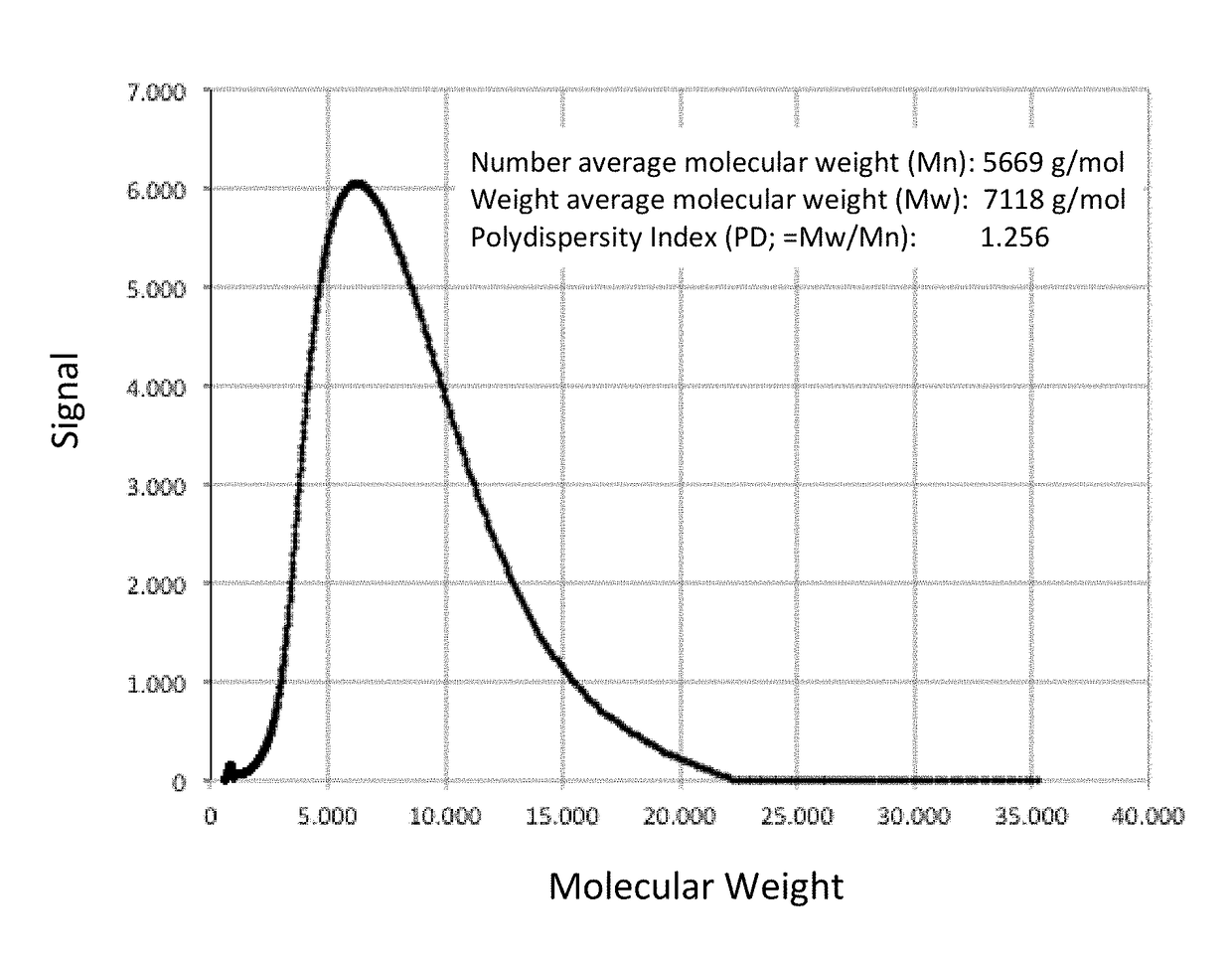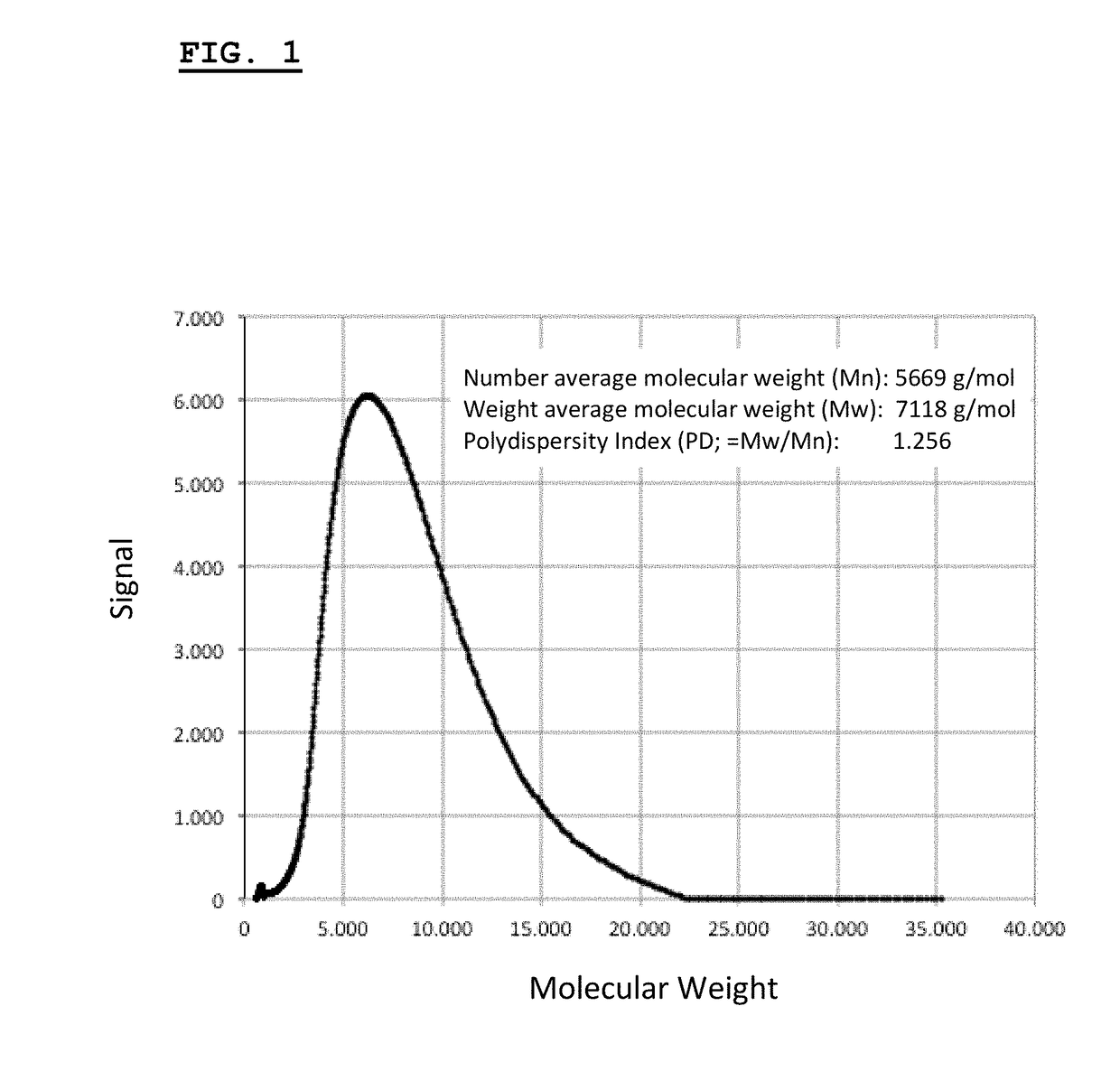Matrix-embedded tolerance-promoting adjuvants for subcutaneous immunotherapy
a technology of tolerance-promoting adjuvants and matrixembedded, which is applied in the direction of allergen ingredients, peptide/protein ingredients, pharmaceutical non-active ingredients, etc. it can solve the problems of limited potential of ps-liposomes as tolerance-promoting adjuvants for current approaches of antigen- or allergen-specific immunotherapy, and inability to carry out repeated injections. , to achieve the effect of enhancing the tolerance-promoting effect of plga
- Summary
- Abstract
- Description
- Claims
- Application Information
AI Technical Summary
Benefits of technology
Problems solved by technology
Method used
Image
Examples
examples
[0538]1. PLGA-PEG-PLGA Hydrogels
[0539]1.1. Synthesis and Characterization of PLGA-PEG-PLGA Hydrogels
[0540]This example describes the synthesis and chacterization of thermogelling PLGA-PEG-PLGA hydrogels.
[0541]The biodegradable triblock polymer described in this example has a PLG / PEG weight ratio of 2.3 (70 / 30), and a lactide / glycolide molar ratio of approx. 15 / 1. Synthesis of the triblock copolymer is performed according to published protocols (Qiao et al., 2005).
[0542]1.1.1. Copolymer Synthesis
[0543]7.8 g PEG 1500 (Fluka Munich) are melted at 120° C. and dried under vacuum and gentle stirring for 2 hours in a two-headed glass reaction flask. The vaccuum is replaced by nitrogen atmosphere. 16.6 g glycolide (Sigma-Aldrich Munich) and 0.89 g D,L-lactide (ABCR GmbH Karlsruhe) are added against a slow nitrogen stream. After all educts are melted, 40 μl Tin(II)-ethylhexanoate (Sigma-Aldrich Munich) are added as catalyst. The temperature is increased to 150° C. and the reaction is continu...
PUM
| Property | Measurement | Unit |
|---|---|---|
| gelling temperature | aaaaa | aaaaa |
| gelling temperature | aaaaa | aaaaa |
| gelling temperature | aaaaa | aaaaa |
Abstract
Description
Claims
Application Information
 Login to View More
Login to View More - R&D
- Intellectual Property
- Life Sciences
- Materials
- Tech Scout
- Unparalleled Data Quality
- Higher Quality Content
- 60% Fewer Hallucinations
Browse by: Latest US Patents, China's latest patents, Technical Efficacy Thesaurus, Application Domain, Technology Topic, Popular Technical Reports.
© 2025 PatSnap. All rights reserved.Legal|Privacy policy|Modern Slavery Act Transparency Statement|Sitemap|About US| Contact US: help@patsnap.com



